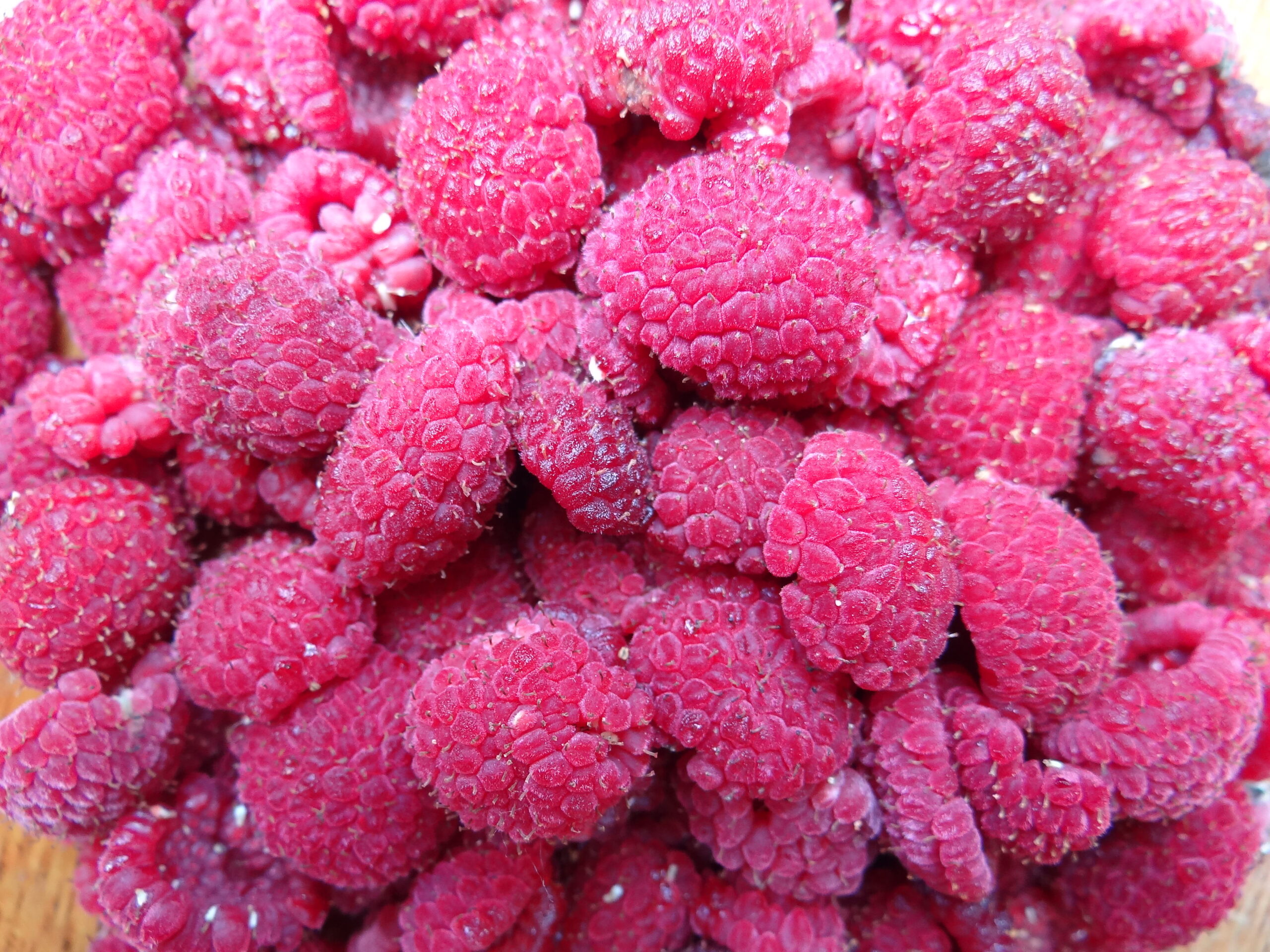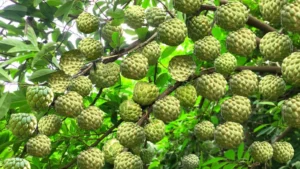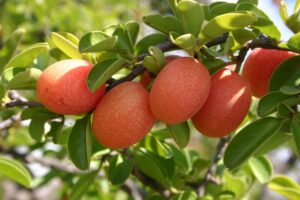How to Grow and Care for Thimbleberry: Complete Guide
Are you looking to add a unique, native fruit-bearing plant to your garden? Thimbleberries (Rubus parviflorus) might be exactly what you need. These delicious native berries offer not only sweet treats but also beautiful white flowers and attractive foliage that can enhance any landscape. In this comprehensive guide, you’ll learn everything you need about growing thimbleberries in your garden, containers, and outdoor spaces.
What Are Thimbleberries?
Thimbleberries are native North American shrubs belonging to the Rubus genus, the same family as raspberries and blackberries. Named for their thimble-like shape, these bright red berries grow wild across much of the northern and western United States. Unlike their thorny raspberry relatives, thimbleberries have no thorns, making them more gardener-friendly.
According to the USDA Forest Service, thimbleberries are native to western North America, from Alaska to northern Mexico and eastward to the Great Lakes region. They typically grow in forest clearings, along streams, and in open woodlands.
Benefits of Growing Thimbleberries
Before diving into cultivation techniques, let’s look at why you might want to grow thimbleberries:
- Wildlife habitat: Thimbleberries provide food and shelter for birds, beneficial insects, and small mammals
- Edible fruits: Sweet, raspberry-like berries perfect for jams, pies, or eating fresh
- Ornamental value: Large maple-like leaves and showy white flowers add visual interest
- Native plant: Supports local ecosystems better than many non-native garden plants
- Low maintenance: Once established, requires minimal care
- Natural erosion control: Extensive root systems help stabilize slopes and prevent soil erosion
Growing Conditions for Thimbleberries
Thimbleberries thrive in specific conditions that mimic their natural woodland habitat. Here’s what they need to flourish:
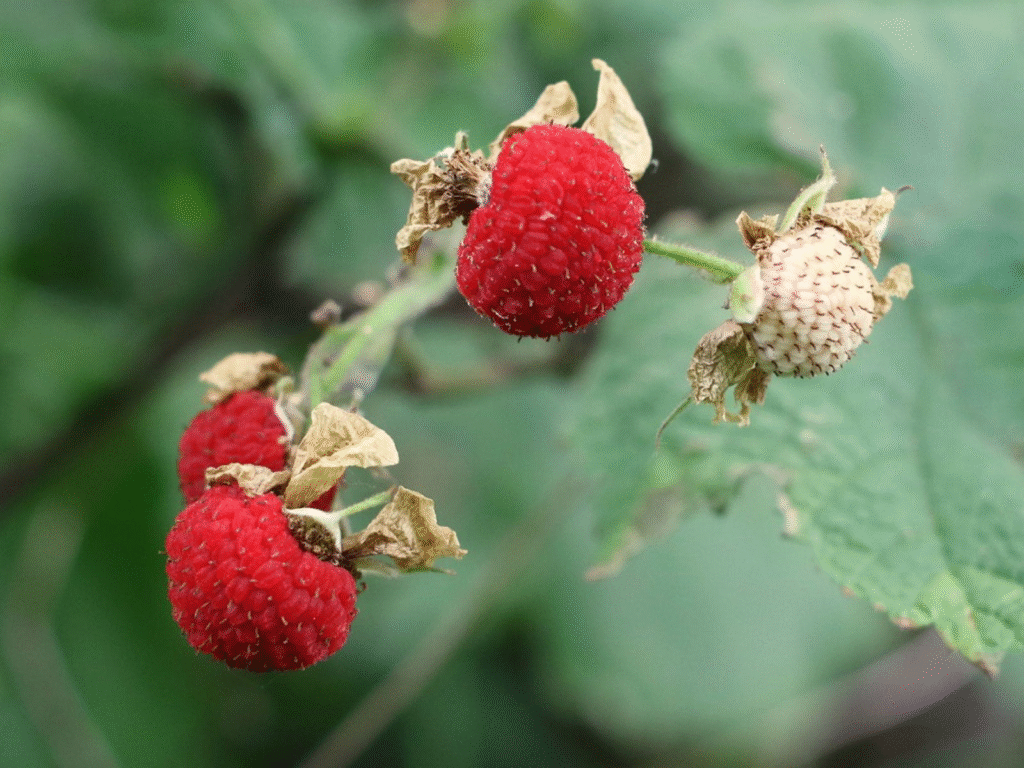
Climate and USDA Zones
Thimbleberries grow best in USDA hardiness zones 3-8. They prefer cool, moist climates and can withstand cold winters but may struggle in hot, humid summers. The plant is particularly well-adapted to the Pacific Northwest, northern Midwest, and northeastern regions of the United States.
Soil Requirements
For optimal growth, thimbleberries need:
- Rich, well-draining soil with plenty of organic matter
- Slightly acidic to neutral pH (5.5-7.0)
- Consistent moisture without waterlogging
Sun and Shade Preferences
Thimbleberries show remarkable adaptability regarding light conditions:
- Full sun: In cooler northern regions
- Partial shade: In warmer southern regions
- Woodland edge: Ideal natural setting where they receive dappled light
How to Grow Thimbleberries from Seed
Growing thimbleberries from seed requires patience but can be highly rewarding. Follow these steps for successful seed propagation:
Seed Collection and Preparation
- Collect fully ripe thimbleberries in mid to late summer
- Extract seeds by mashing fruits gently and rinsing away the pulp
- Dry seeds thoroughly on paper towels
- Cold stratify the seeds for 60-90 days by placing them in moist sand or peat in a plastic bag in the refrigerator
Planting Thimbleberry Seeds
- Fill seed-starting trays with a seed-starting mix
- Plant stratified seeds approximately ¼ inch deep
- Keep soil consistently moist but not waterlogged
- Place in a warm location (65-70°F)
- Germination typically occurs within 2-4 weeks
- Transplant seedlings when they have several true leaves
Seedling Care
- Water regularly but gently
- Provide bright, indirect light
- Fertilize with a diluted organic fertilizer once true leaves appear
- Harden off gradually before transplanting outdoors
Propagating Thimbleberries from Cuttings and Divisions
For faster results than seeds, consider these vegetative propagation methods:
Root Division
- In early spring or fall, dig up a portion of an established plant
- Separate a section with healthy roots and at least one growth bud
- Replant immediately at the same depth as the original plant
- Water thoroughly and keep soil moist until established
Stem Cuttings
- In late spring, take 6-8 inch cuttings from non-flowering stems
- Remove lower leaves, keeping 2-3 leaves at the top
- Dip cut end in rooting hormone (optional but helpful)
- Plant in a mix of perlite and peat moss
- Keep humid by covering with plastic, removing daily to prevent mold
- Roots should develop within 3-4 weeks
Planting Thimbleberries in Your Garden
Once you have your thimbleberry plants ready, proper planting is crucial for their long-term success.
When to Plant
The best times to plant thimbleberries are:
- Early spring after the last frost
- Fall, at least 6 weeks before the first expected frost
Spacing Requirements
For garden plantings, consider the mature size of thimbleberries:
- Plant 3-4 feet apart for individual plants
- For hedgerows or mass plantings, space 2-3 feet apart
- Allow 4-5 feet between rows if planting multiple rows
Planting Process
- Dig a hole twice as wide as the root ball and just as deep
- Mix compost or well-rotted manure into the backfill soil
- Place plant at the same depth it was previously growing
- Backfill and firm soil gently around roots
- Water thoroughly after planting
- Apply 2-3 inches of organic mulch, keeping it away from the stems
Growing Thimbleberries in Containers
Yes, you can grow thimbleberries in containers! This is an excellent option for gardeners with limited space or less-than-ideal soil conditions.
Container Selection
- Choose containers at least 18-24 inches deep and wide
- Ensure adequate drainage holes
- Terra cotta or fabric pots work well as they allow soil to breathe
Potting Mix
Create a well-draining but moisture-retentive mix:
- 2 parts good quality potting soil
- 1 part coconut coir or peat moss
- 1 part perlite or pumice
- Add a cup of compost per gallon of mix
Container Care Specifics
Potted thimbleberries require more attention than garden-planted ones:
- Water more frequently as containers dry out faster
- Fertilize monthly during growing season with balanced organic fertilizer
- Consider moving containers to protected areas during extreme weather
- Repot every 2-3 years or when plants become root-bound
Thimbleberry Care and Maintenance
Proper care will ensure your thimbleberries remain healthy and productive for many years.
Watering Requirements
| Growth Stage | Watering Frequency | Amount | Notes |
|---|---|---|---|
| New plantings | Every 3-4 days | 1-2 gallons | Keep consistently moist |
| Established plants (Year 1) | Weekly | 1-2 gallons | More during drought |
| Mature plants (Year 2+) | As needed | 1-2 gallons | When top 2″ of soil is dry |
| Flowering/Fruiting | Weekly | 1-2 gallons | Consistent moisture important |
| Fall/Winter | Minimal | Only during extended dry periods | Reduce in dormancy |
Fertilization Schedule
Thimbleberries aren’t heavy feeders, but they benefit from:
- Spring application of balanced organic fertilizer (10-10-10)
- Annual addition of 1-2 inches of compost around the base
- Avoid high-nitrogen fertilizers that promote foliage at the expense of fruit
Pruning Techniques
Proper pruning maintains plant health and maximizes fruit production:
- First-year care: Minimal pruning needed; remove only damaged canes
- Second year and beyond:
- In late winter/early spring, remove all two-year-old canes that fruited the previous year
- Thin remaining canes if overcrowded, leaving 4-5 healthy canes per square foot
- Cut out weak, damaged, or diseased canes at ground level
Mulching Benefits
Apply 2-4 inches of organic mulch to:
- Conserve soil moisture
- Suppress weeds
- Moderate soil temperature
- Add organic matter as it breaks down
Good mulch choices include wood chips, shredded leaves, straw, or pine needles.
Common Pests and Diseases
While generally resilient, thimbleberries can face certain challenges:
Pest Management
- Japanese beetles: Handpick or use organic insecticidal soap
- Aphids: Blast with water or apply neem oil
- Spider mites: Increase humidity and apply insecticidal soap if needed
- Birds: Use netting during fruiting season if bird predation is significant
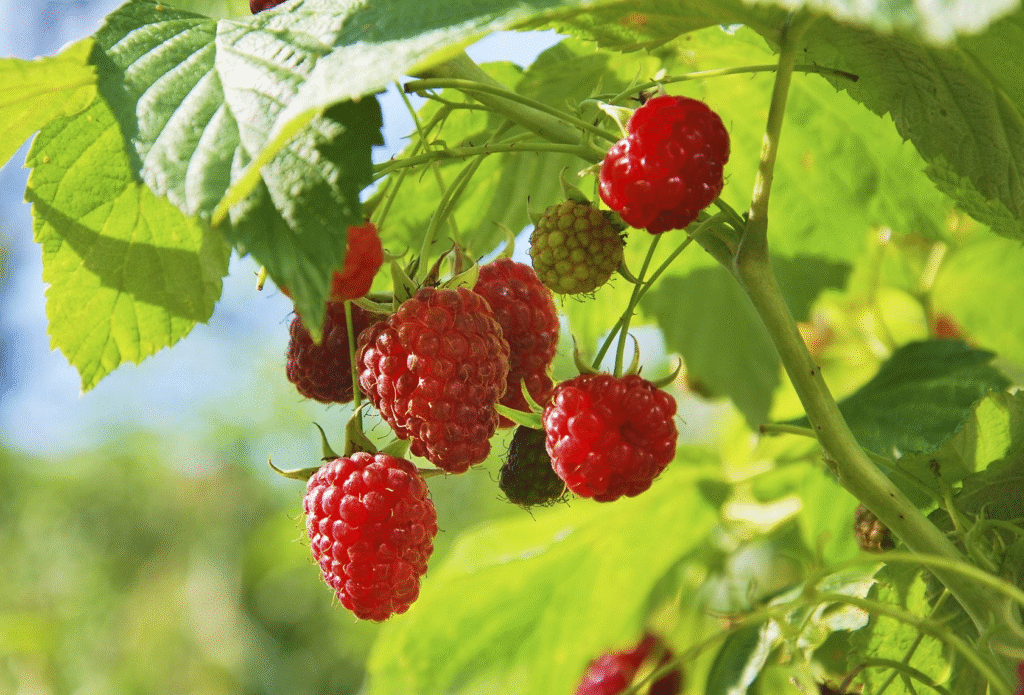
Disease Prevention
- Powdery mildew: Improve air circulation through proper spacing and pruning
- Leaf spot: Remove affected leaves and avoid overhead watering
- Root rot: Ensure proper drainage and avoid overwatering
- Verticillium wilt: No cure; remove affected plants and avoid replanting in the same location
Harvesting and Using Thimbleberries
The reward for your care comes in the form of delicious berries, typically ready for harvest in mid to late summer.
When and How to Harvest
- Berries are ready when they turn bright red and detach easily from the plant
- Harvest in the morning when temperatures are cool
- Pick gently as thimbleberries are softer than raspberries
- Collect in shallow containers to prevent crushing
Storage Tips
- Fresh thimbleberries are highly perishable, lasting only 1-2 days in refrigeration
- For longer storage, freeze berries on a tray before transferring to freezer containers
- Can also be dehydrated for long-term storage
Culinary Uses
Thimbleberries make excellent:
- Jams and jellies (their natural pectin content makes them ideal)
- Pie fillings
- Fruit sauces
- Additions to baked goods
- Natural food coloring
- Fresh eating (though some find the many small seeds distracting)
According to the National Park Service, indigenous peoples traditionally used thimbleberries not only as food but also for medicinal purposes. The young shoots were sometimes eaten as vegetables, and the large leaves served practical purposes like lining baskets or wrapping foods.
Companion Planting with Thimbleberries
Enhance your garden ecosystem by planting compatible species alongside your thimbleberries:
Good Companions
- Native wildflowers: Attract pollinators
- Comfrey: Accumulates nutrients from deep in the soil
- Yarrow: Attracts beneficial insects
- Wild ginger: Similar woodland conditions
- Ferns: Share similar growing conditions and create woodland aesthetic
Plants to Avoid
- Other aggressive spreaders: May compete for resources
- Allelopathic plants: Black walnut trees produce chemicals harmful to Rubus species
- Heavy feeders: May deplete soil nutrients needed by thimbleberries
Winter Care for Thimbleberries
Preparing your thimbleberries for winter will ensure healthy growth the following spring:
- Reduce watering in fall to help plants harden off
- Apply additional mulch (3-4 inches) after ground freezes
- Avoid pruning in fall, which can stimulate vulnerable new growth
- For container plants in zones 3-4, consider moving to a protected location
- Remove winter mulch gradually in spring as temperatures warm
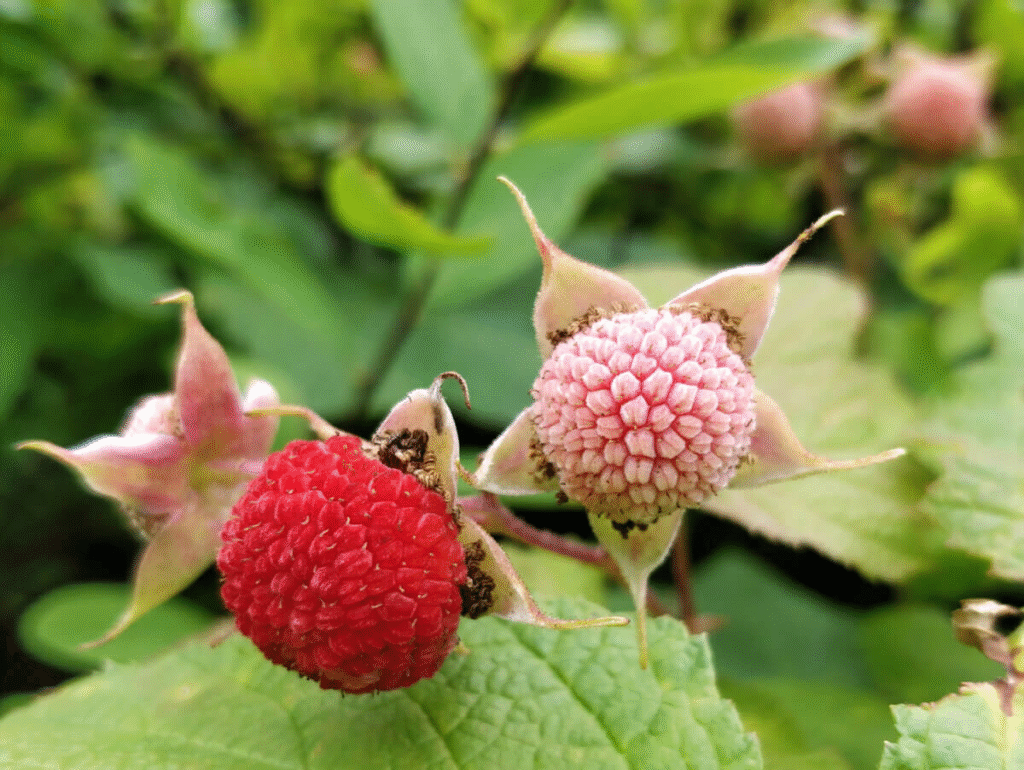
Landscape Uses for Thimbleberries
Beyond their edible benefits, thimbleberries offer multiple landscape functions:
- Naturalized areas: Create woodland edges and transitions
- Wildlife gardens: Provide food and shelter for native fauna
- Slope stabilization: Extensive root systems prevent erosion
- Screening: Dense growth provides privacy
- Native plant gardens: Showcase regional flora
- Riparian restoration: Thrive in streamside environments
Sustainability Benefits of Growing Thimbleberries
Adding thimbleberries to your landscape contributes to sustainability in several ways:
- Water conservation: Once established, require minimal supplemental irrigation
- Reduced chemical inputs: Generally pest-resistant, reducing need for pesticides
- Native habitat creation: Support local wildlife and pollinators
- Food production: Provide hyperlocal food source with zero food miles
- Soil improvement: Deep roots and leaf litter build soil health over time
Conclusion
Growing thimbleberries offers a unique opportunity to combine ornamental gardening with edible landscaping while supporting native ecosystems. Whether you’re planting them in a woodland garden, using them for erosion control, or growing them in containers on your patio, these versatile native plants reward your efforts with beautiful foliage, flowers, and delicious berries.
With proper care and attention to their growing preferences, your thimbleberry plants can become a productive and beautiful part of your landscape for many years to come. As you watch pollinators flock to the flowers and enjoy the sweet-tart taste of homegrown berries, you’ll appreciate why these native plants deserve a place in more American gardens.
